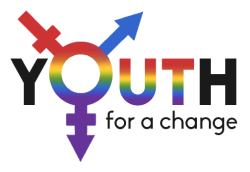
I am standing on the platform at the CN train station in Vancouver taking a deep drag on what I hope to be my last cigarette ever. I have been smoking a pack a day of DuMauriers, the ones in the red boxes. I tried to quit when I got bronchitis and then again when I got pneumonia. I told myself that I had gone through withdrawal while too sick to smoke. I believed I could go back to having only one or two per day like I did for two years before becoming addicted. Back then, I couldn’t afford DuMauriers and smoked only roll-your-own. I was lousy at rolling and could only make cigarettes using a crude little device. No filters, of course. Having failed to quit with those two tries, this time I am determined to go cold turkey and to never, never step back onto the slippery slope to addiction.
It is 1974 and everyone smokes. We are all persuaded by the media that smoking makes you look cool. I am only 24 and overly concerned with how I look. And there is only one non-smoking car of the very many on this cross Canada CN passenger train.

I put out the butt and mount the Day-Nighter car, my mind focused on finding Margo Dunn. She is already in the window seat and I try to arrange all my belongings next to and around her. It’s going to be a long five-day trip to Montreal. Margo is very allergic to cigarette smoke and I can’t be near her and have it on my clothes.
To keep Margo from an attack, neither of us can walk through any of the other smoke-filled cars. This means we cannot buy any food or drinks from the snack bar or dining area and can’t sleep in the car with pull out beds. Our non-smoking ‘Day-Nighter car has the seats like airplane seats with a small footrest, armrests and the ability to recline ever so slightly. I really need to be horizontal to sleep so I am only going to doze for the next five days. We have tried to pack all of our food and drinks with us. We have no way to keep anything cool. We grow to tolerate room temperature juice but, as time goes on, the crackers spread with tinned ‘potted meat’ seem pretty gross.

I met Margo Dunn about six months before at Women’s Caucus meetings on campus. We were working with others in developing the field of Women’s Studies, and towards establishing a Women’s Studies Program at SFU. Margo needs to spend the summer of 1974 in Montreal to further work on her MA thesis. Maggie Benston has been invited to teach a six-week course in Women’s Studies at Sir George Williams (now Concordia) University in Montreal. This is one of the first credit courses in Women’s Studies at a Canadian university. To my surprise, Maggie is inviting me to team teach with her. Maggie has published the ground breaking Political Economy of Women’s Liberation and is a tenured professor at SFU. My only credential is a very recent BA. None the less, Maggie is committed to collective work. And she respects me from my participation in informal meetings she hosts toward her next Women’s Liberation publication. So, the three of us are off to Montreal together for the summer. We sublet a three-bedroom apartment on Stanley Street, walking distance to our classes in an English-speaking area near McGill.
Maggie is taking a flight; however, Margo has a fear of flying and wants to take the train. Even though it will take five full days, I decide to accompany her and see Canada from the ground. After all, it’s an opportunity to get to know Margo and incentive to quit my nicotine habit.

Once our train lurches underway, we face long delays leaving the Fraser Valley due to flooding. At points all I can see out the train car window is water, and I wonder if the tracks are actually on a grade above it. When we turn northward into the narrow Fraser Canyon, we stop again for several hours. Finally, as the train begins to move, we are informed they had to clear a rock slide from the tracks. I begin to wonder why Margo is so certain that flying is too risky and that train travel isn’t.

When we arrive in Montreal at last, almost a day late, I have seen enough of the endless prairies and endless forests of the Great Canadian Shield. For another 48 hours, my body continues to shake from side to side like it had with the motion of the train. But the great news is that Margo and I have shared our life stories, intense opinions, hopes, dreams, and are bonded. Even better, thanks to Margo’s allergy, I have gotten through my nicotine withdrawal and never do smoke another cigarette. Instead of smoking on the journey, I crochet a large shawl that I think is the latest fashion. The first time I wear it, I accidentally damage it so I can never wear it again. So far it has been my one and only crochet project.

Margo is happy to share her home town Montreal with us. We eat quiche, patè and crepes in outdoor cafes, drink wine and socialize with the Women’s Studies students. Since I am only 24, many are older and more worldly than I am. I love the cosmopolitan atmosphere, the Jewish delis, the fashion. We haunt the Librairie L’Androgyne, a lesbian, gay and feminist bookstore.

When Margo decides to take us out dancing, I am all in. Not far from our apartment is Chez Madame Arthur. Margo herds four of us there, looks around ever so briefly, snorts, “It’s all men!” and promptly marches us out. All I notice are mirrored walls, loud music and not many tables. We find a restaurant and have a drink there instead. I am married to a man at this time, though he is back in Vancouver. I have never been to a bar in Montreal and have no idea that this is my first excursion into a lesbian bar, one that is somehow filled with men. A year later, Margo takes me to my first Vancouver lesbian bar, Queenies, even though I have not yet come out. This time, I notice the pairs of women making out in both washrooms. I am deeply embarrassed to be wearing a long flowy dress. No one else is dressed like I am. Margo and Jessie have fun dancing while I just sit nervously near a woman that I know won’t come onto me, and watch.

I owe Margo so much. She is my first lesbian friend, took me to my first lesbian places (twice) and gave me a smoke-free life. She published my poem No Rape No in Room of Ones Own. We always talked for hours. She graciously forgave me for some actions that broke her trust in me. She delighted me in her persona and satirical stories told as Queen Elizabeth II at Quirk-e performances. In our last conversation, she complimented my writing in a piece called What Maggie Taught Me which describes some of our shared history. And Margo was so enduringly proud that her bravery on the 1970 Abortion Caravan played a key role in saving the lives and futures of countless women in Canada, women like me.

That summer in Montreal in 1974, Margo, Maggie and I can barely imagine it. That a legacy will grow from our course to build a Women’s Studies program that continues for 50 years and more.













